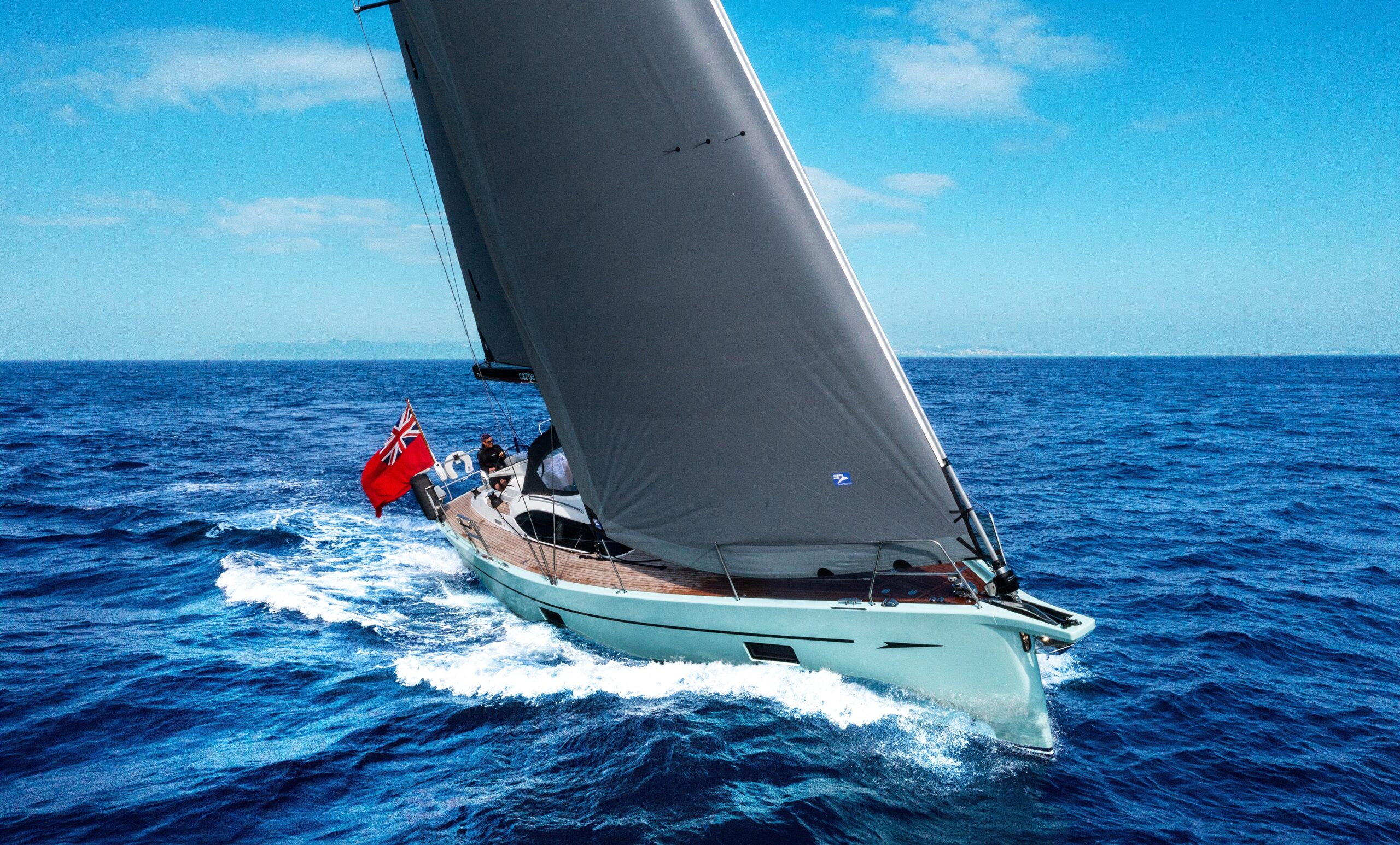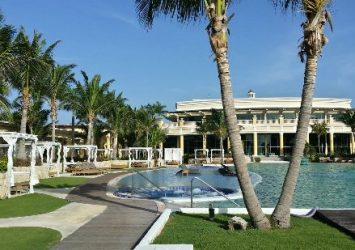Introduction
The North Atlantic has captivated sailors for over a thousand years, ever since Viking longships first ventured beyond sight of land to discover Iceland, Greenland, and eventually North America. These waters represent sailing at its most elemental—where changing weather systems, powerful currents, and dramatic coastlines test seamanship while rewarding the bold with experiences that define what it means to be a true offshore sailor. The Viking Rally revives this spirit of Norse exploration, bringing together a fleet of modern bluewater cruising yachts for an organized expedition through some of the Atlantic’s most storied and spectacular waters. This isn’t merely a passage but a journey through maritime history, visiting lands shaped by volcanic forces, sustained by fishing traditions, and steeped in sagas that still resonate today. For sailors seeking adventure beyond the ordinary, the Viking Rally offers passage through waters where legends were born and where the connection between sailor and sea remains as profound as it was centuries ago.
The Viking Rally: Following Ancient Routes in Modern Vessels
Retracing Legendary Voyages
The Viking Rally follows routes pioneered by Norse explorers over a millennium ago, though modern participants enjoy navigational certainty, weather forecasting, and vessel comfort that would astound those ancient mariners. The journey typically encompasses Scotland’s dramatic coastlines, the wild beauty of the Faroe Islands, Iceland’s otherworldly landscapes, and potentially Greenland’s imposing fjords—a progression that mirrors the Vikings’ own expansion across the North Atlantic.
Rally Format and Structure
Unlike solo ocean crossings where sailors face challenges in isolation, the rally format provides community and mutual support while preserving each yacht’s independence. Participating vessels maintain regular communication, coordinate timing to enjoy social gatherings in remarkable anchorages, and benefit from collective weather routing discussions while each crew makes their own navigation decisions and sails at their preferred pace.
Timing and Duration
The Viking Rally operates during the North Atlantic’s brief optimal weather window, typically from late spring through early autumn when gale frequency decreases, temperatures moderate, and daylight hours extend dramatically in high latitudes. The complete journey might span several weeks to months depending on routing choices, weather delays, and how long participants linger to explore these captivating destinations.
The Vessels: Built for North Atlantic Conditions
Why Oyster Yachts Excel in Challenging Waters
North Atlantic sailing demands vessels combining strength, seaworthiness, and comfort for extended offshore passages in potentially rough conditions. Oyster Yachts have established sterling reputations among serious offshore sailors precisely because they’re engineered for these challenges—robust construction that inspires confidence in heavy weather, efficient sail plans that balance performance with manageable handling, and thoughtful interiors where crews remain comfortable during multi-day passages across open ocean.
Essential Equipment for High-Latitude Cruising
Rally participants outfit their vessels for self-sufficiency and safety far from assistance. Critical equipment includes comprehensive navigation electronics with redundant backup systems, robust storm sails for heavy weather, adequate fuel capacity for extended motoring when conditions demand, reliable watermakers ensuring fresh water independence, and heating systems maintaining livable interior temperatures in northern climates where even summer can bring cold, damp conditions.
Preparing Your Yacht for the Challenge
Beyond standard bluewater equipment, Viking Rally preparation includes special attention to rigging inspection and potential reinforcement, storm preparation procedures including jackline installation and harness protocols, detailed spare parts inventories for systems likely to need attention during extended cruising, and provisioning strategies ensuring adequate food supplies given limited reprovisioning opportunities in remote locations.
The Route: Destinations That Define the Rally
Scotland: Gateway to the North
Many rallies begin along Scotland’s western coast, where sailors adjust to North Atlantic conditions while exploring sheltered lochs, visiting whisky distilleries, and experiencing Scottish hospitality. These waters provide ideal preparation for more exposed passages ahead while offering stunning scenery and cultural richness.
Faroe Islands: North Atlantic Jewels
The Faroes present some of the rally’s most dramatic landscapes—sheer cliffs rising from the ocean, picturesque villages clinging to hillsides, and seabird colonies numbering in the millions. These islands also introduce sailors to North Atlantic weather patterns, where conditions can change rapidly and fog frequently challenges navigation.
Iceland: Land of Fire and Ice
Iceland represents a rally highlight, where volcanic landscapes create surreal backdrops, geothermal hot springs invite relaxation after cold passages, and cosmopolitan Reykjavik provides modern amenities alongside Viking heritage. Circumnavigating Iceland or exploring its northern fjords offers endless anchorages and experiences unlike anywhere else on Earth.
Greenland: The Ultimate Frontier
For those seeking maximum adventure, continuing to Greenland provides the rally’s most remote and challenging segment. Massive icebergs calved from ancient glaciers, Inuit communities maintaining traditional practices, and landscapes dominated by ice sheets create an environment that feels genuinely untouched and timeless.
Daily Life on the Viking Rally
Passage Making and Watch Systems
Multi-day ocean passages between destinations require organized watch systems ensuring the vessel remains safely manned around the clock. Rally participants typically maintain three or four-hour watches, monitoring weather, adjusting sail trim, maintaining navigation awareness, and preparing meals for crew—establishing routines that make extended passages sustainable and safe.
Weather Routing and Decision Making
Success in North Atlantic sailing hinges on intelligent weather routing. Rally participants study forecast models obsessively, discuss weather windows via SSB radio or satellite communication, and time departures to take advantage of favorable conditions while avoiding developing low-pressure systems that could bring sustained gales.
The Camaraderie of Shared Adventure
Rally participation creates bonds that last lifetimes. Evening gatherings in spectacular anchorages where crews share stories and local specialties, radio schedules maintaining connection during passages when vessels spread across hundreds of miles, and the mutual support when challenges arise all contribute to community that distinguishes organized rallies from independent cruising.
Navigating North Atlantic Challenges
Weather Systems and Storm Management
The North Atlantic breeds powerful weather systems that command respect. Understanding low-pressure system development, recognizing signs of deteriorating conditions, implementing storm preparation protocols before weather arrives, and possessing the seamanship to manage vessels safely in heavy weather all prove essential for successful North Atlantic sailing.
Cold and Damp Conditions
Even during summer, North Atlantic temperatures rarely feel warm, and persistent dampness challenges comfort and morale. Successful crews master moisture management through adequate ventilation, strategic heating, maintaining dry clothing reserves, and creating routines that preserve warmth and energy during extended passages.
Navigation in High Latitudes
Arctic and sub-Arctic sailing presents unique navigation considerations including magnetic variation anomalies affecting compass reliability, electronic chart datum issues, limited GPS satellite coverage at extreme latitudes, and the need to maintain traditional celestial navigation skills as backup for electronics that might fail.
Cultural Immersion and Exploration
Connecting with Island Communities
Rally participants discover that these remote Atlantic islands maintain distinctive cultures shaped by isolation, maritime traditions, and harsh environments. Taking time to engage with local communities, learning about fishing practices that have sustained island life for generations, and respecting traditions enriches the sailing adventure with meaningful human connections.
Exploring Ashore
While sailing provides the adventure’s foundation, shore exploration reveals each destination’s character. Hiking to bird cliffs in the Faroes, bathing in Icelandic hot springs, exploring Viking archaeological sites, and witnessing glaciers calving in Greenland create memories as vivid as any passage experience.
Culinary Adventures
Local cuisine reflects each region’s maritime heritage and creative use of limited resources. Fresh seafood prepared in traditional styles, unusual delicacies like fermented shark in Iceland or dried lamb in the Faroes, and the warm hospitality that accompanies shared meals provide cultural immersion beyond typical tourist experiences.
Environmental Awareness and Responsibility
Protecting Fragile Island Ecosystems
Atlantic islands support unique ecosystems easily impacted by careless visitors. Rally participants commit to respecting nesting seabird colonies by maintaining appropriate distances, managing waste to prevent pollution of pristine waters, and following established paths ashore to minimize vegetation damage.
Climate Change in the North Atlantic
Sailors witnessing retreating glaciers, changing weather patterns, and shifting fish stocks observe climate change impacts directly. Many rally participants return home as environmental advocates, motivated by firsthand observation of how rapidly these northern environments are transforming.
Supporting Sustainable Tourism
Visiting sailors contribute economically to communities where traditional livelihoods face mounting challenges. Purchasing locally, hiring local guides, dining at family-owned restaurants, and engaging respectfully with residents helps sustain island economies while providing authentic experiences impossible to replicate in mass tourism destinations.
Photography and Documentation
Capturing Epic Landscapes
The Viking Rally route offers photographic opportunities rivaling anywhere on Earth. Dramatic lighting in high latitudes, weather systems creating dynamic skies, wildlife in natural habitats, and seascapes ranging from glassy calm to storm-tossed seas challenge photographers to capture nature’s power and beauty.
Sharing Your Adventure
Modern satellite communication enables real-time sharing of rally experiences through blogs, social media, and video calls that bring armchair adventurers along virtually. Many participants maintain detailed logs and photo journals, creating lasting records of journeys they’ll treasure forever.
Contributing to Maritime Heritage
Rally participants become part of North Atlantic maritime tradition stretching back centuries. Documenting voyages, sharing navigation insights, and inspiring future sailors to undertake similar adventures contributes to sailing culture while honoring those who first ventured into these waters aboard far more primitive vessels.
FAQ Section
Q: What level of sailing experience is required for the Viking Rally?
A: The rally suits experienced offshore sailors comfortable with multi-day passages, self-sufficient cruising, and the responsibilities of commanding a vessel far from assistance. While you needn’t have previous North Atlantic experience, strong coastal and offshore credentials, competent navigation skills, and realistic understanding of bluewater sailing’s demands prove essential.
Q: How should I prepare physically for the Viking Rally?
A: North Atlantic sailing demands good general fitness, as boat handling in rough seas requires strength and stamina. Cold-weather tolerance helps immensely, as does experience with sleep deprivation and irregular schedules. Mental preparation—understanding you’ll face discomfort, occasional fear, and extended periods of monotony punctuated by intense activity—proves equally important.
Q: What happens if I encounter mechanical problems during the rally?
A: The rally format provides mutual support, with fellow participants often able to assist with repairs or provide critical spare parts. However, marine services in remote Atlantic islands are limited, making mechanical self-sufficiency critical. Rally organizers maintain communication with all vessels and can coordinate assistance, but sailors must be prepared to address most issues independently.
Q: Can I join the rally for just one segment rather than the entire route?
A: Many rallies allow participants to join for specific legs, recognizing that time constraints prevent some sailors from completing the entire journey. This flexibility enables experiencing the adventure even with limited availability, though completing the full route provides the most rewarding and comprehensive experience.
Q: What’s the best yacht size for the Viking Rally?
A: Most participants sail vessels between 40-60 feet, balancing seaworthiness, manageable short-handed sailing, and adequate interior comfort for extended passages. Smaller yachts certainly can complete the rally but require greater endurance from crews, while larger vessels offer more comfort but may find limited facilities in some smaller harbors.
Conclusion
The Viking Rally represents far more than simply sailing from one port to another—it’s a journey through maritime history, across waters that have tested sailors for millennia, to lands that remain among Earth’s most dramatic and least developed. This adventure demands competence, preparation, and respect for the ocean’s power while rewarding participants with experiences that fundamentally alter their understanding of sailing’s possibilities. Following in the wake of Viking explorers, modern sailors discover that the North Atlantic’s appeal endures not despite its challenges but because of them—these are waters where sailing matters, where skill and judgment determine outcomes, and where the bond between crew, vessel, and sea crystallizes into something profound. For those ready to venture beyond comfortable cruising grounds, to test themselves and their boats against conditions that separate dreamers from doers, the Viking Rally extends an invitation as compelling today as when the first Norse sailors turned their bows westward into unknown seas.






